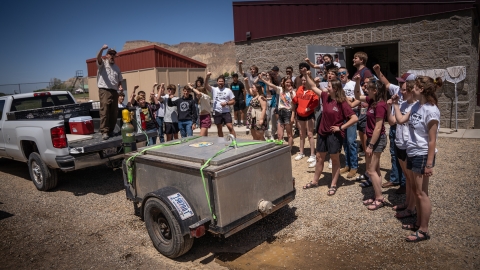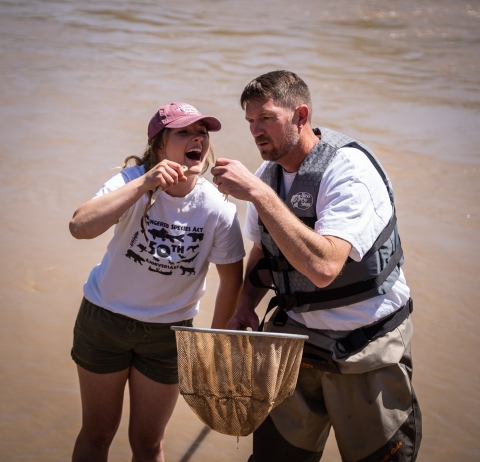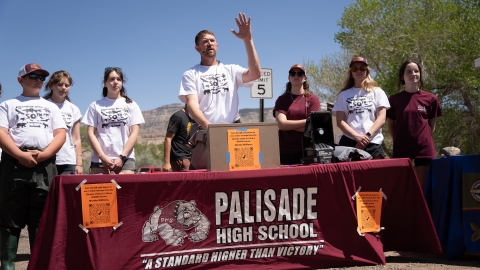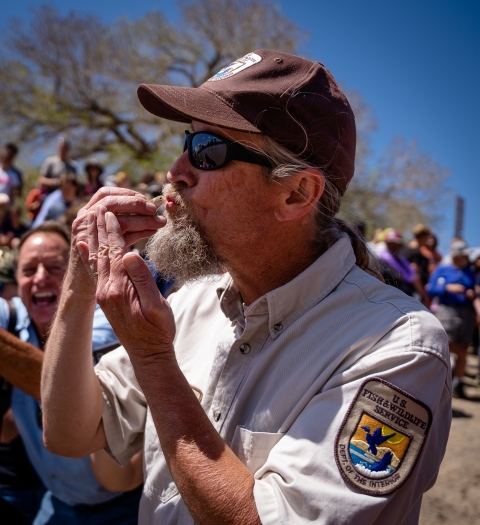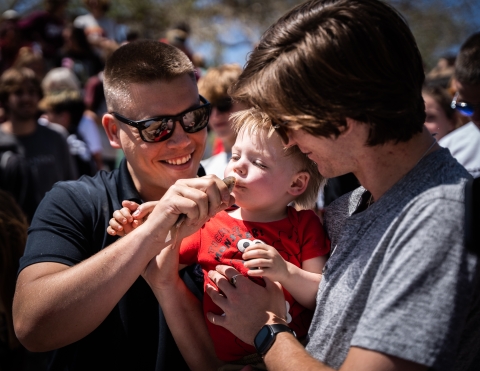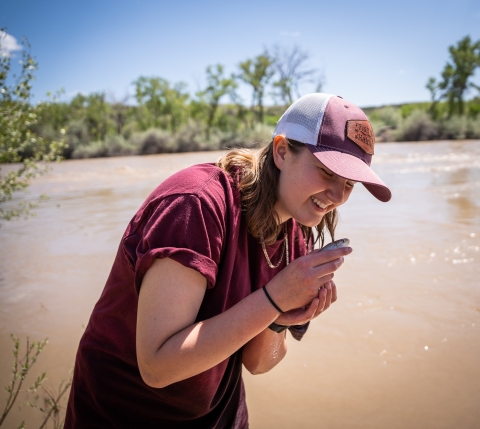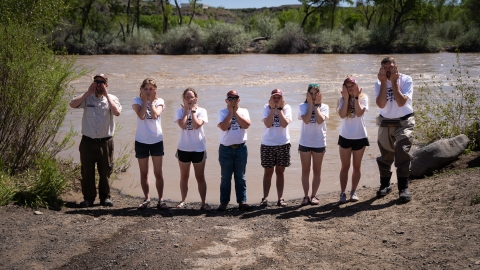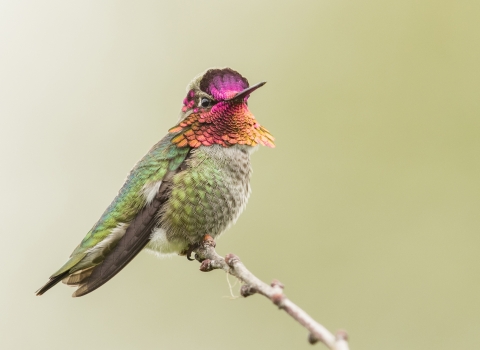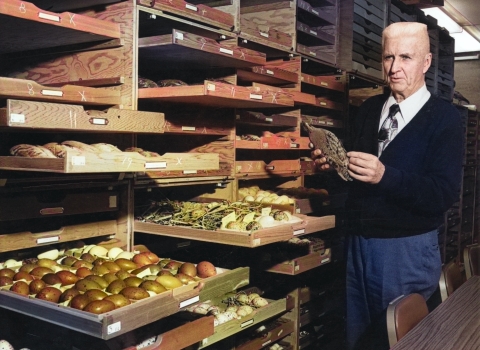Palisade High School in Palisade, Colorado, celebrated the 50th Anniversary of the Endangered Species Act with a splash! For the third consecutive year, Palisade High School students raised around 250 endangered razorback sucker at their on-campus fish hatchery to release them into their native habitat - the mighty Colorado River.
The razorback sucker is an endangered species found only in the warm-water portions of the Colorado River Basin. Three to five million years ago, this fish made its way into the river and its tributaries. It’s one of the largest sucker species in North America, growing up to 3 feet in length. In 1979, the razorback sucker was listed as endangered under Colorado law, and by 1991, it was listed as federally endangered and given full protection under the Endangered Species Act. Today, we and many partners work together to restore self-sustaining populations through propagation and stocking.
The Palisade High School Endangered Fish Hatchery provides students with hands-on experiential learning on a wide array of aquaculture and fisheries science techniques and topics revolving around the conservation of Upper Colorado River fishes including recirculating aquaculture, conservation of native fishes, the importance and application of The Endangered Species Act, ichthyology, fish biology, water chemistry, statistics and much more.
The project began in 2015 when Palisade High School partnered with U.S. Fish and Wildlife Service and the Upper Colorado River Endangered Fish Recovery Program to plan and create the Palisade High School Endangered Fish Hatchery. This collaboration is unique since it is one of a small handful of endangered fish hatcheries in the United States operated by high school students, and potentially the only non-salmonid endangered fish partnership of its kind.
On May 9, 2023, hundreds of people flocked to a boat launch including students, teachers, local community, Congressional staff, media, and partners. Teacher Patrick (Pat) Steele kicked off the event with an incredible speech highlighting the impact and importance of the Endangered Species Act and celebrating the hard work and dedication of the students that work at the high school’s hatchery.
“This anniversary is a reminder that conservation efforts are essential for stemming the worsening impacts of climate change climate change
Climate change includes both global warming driven by human-induced emissions of greenhouse gases and the resulting large-scale shifts in weather patterns. Though there have been previous periods of climatic change, since the mid-20th century humans have had an unprecedented impact on Earth's climate system and caused change on a global scale.
Learn more about climate change , protecting biodiversity and preserving our planet for ourselves and future generations,” said Pat Steel, Palisade High School science teacher. “The ESA has given Palisade High School students the opportunity to become educated about the endangered species that exist in our backyard as well as ways that we can not only preserve and protect these species but also how we can contribute to the recovery efforts of such a cool species of fish, a species of fish that lives nowhere else in the world." Steele added.
Michael (Mike) Gross of Ouray National Fish Hatchery closed out the opening remarks by reminding folks that if they release a fish, it’s tradition to give it a kiss goodbye.
Palisade High School Endangered Fish Hatchery students began collecting razorback sucker in their nets and moving them to the edge of the river. Guests crowded the boat dock excitedly waiting their turn to hold a fish, kiss it goodbye, and release it into the Colorado River. One by one, over 250 juvenile razorback sucker were released as the crowd celebrated their new journey.
Each fish is tagged to allow Ouray National Fish Hatchery to track them. If hatchery staff find a razorback sucker without a tag, it’s assumed that it’s the result of wild spawning and proves success of the students’ hard work.
As an extra special treat, at the end of April, Palisade High School Endangered Fish Hatchery students took a trip to Ouray National Fish Hatchery where they helped spawn razorbacks for next year’s effort. They had a 100% survival rate! This is the first time the students will be involved from the beginning phases of spawning to the end result of releasing juveniles. Next year, the 1000th fish will be released.

